|
On this website |
Files |
|
| Key Messages Key messages about prescribed safer supply |
Prescribed Safer Supply Programs: Emerging Evidence Quick review of emerging evidence drawn from program evaluations and peer-reviewed publications |
CAPUD Safe Supply Concept Document (PDF) A general outline of what safe supply is and the role of safe supply in drug policy |
| Prescribed Safer Supply Infographics Quick, easy-to-read messages about prescribed safer supply |
Prescribed Safer Supply: Frequently Asked Questions Addresses common questions about prescribed safer supply programs |
Prescribed Safer Supply Clients' Perspectives (PDF) Examples of client quotes about benefits related to their participation in prescribed safer supply programs |
| Presentation Slide Decks Slide decks from presentations about prescribed safer supply |
Prescribed Safer Supply Program Evaluations Reports from prescribed safer supply programs |
Briefing Note: Prescribed Alternatives Programs in Ontario (PDF) Information about the SUAP-funded PSS programs in Ontario, including program model, client profiles, and evidence - updated 04/2024 |
| Videos Videos detailing how prescribed safer supply programs operate |
Research Spotlight Webinars Researchers present and discuss their published work on prescribed safer supply |
Prescribed Safer Supply: A Rapid Review of the Evidence (PDF) A report by the Ontario Drug Policy Research Network |

Key Messages
Key message 1: The problem is the powerful unregulated drug supply.
- Prescribed hydromorphone is not contributing to opioid-related deaths.
- There is no indication that youth are using or being harmed by diverted prescribed safer supply medications.
- Prescribed safer supply is intended to reduce people’s need to use drugs from the unpredictable, contaminated unregulated drug supply. It is not intended to ‘solve addiction’. Prescribed safer supply is harm reduction, not addiction treatment.
- This attempt at addressing a crisis is not causing a crisis.
Key message 2: Many research studies on safer supply are underway - evidence is growing
- Studies draw on health administrative data, surveys, interviews, and focus groups
- All research is welcomed to improve care and ensure wellness of communities and individuals. Current research underway include studies on:
- Impact on clients’ health, wellbeing, and substance use
- Community impact
- Economic and health system impact
- Which models are most effective in which settings
- Outcomes for different populations (e.g., women, Indigenous people, rural)
- Currently, there are over 20 peer reviewed publications. New research is being published monthly.
- Health Canada funded programs undertake evaluations to determine how well they are meeting their intended objectives.
Key message 3. Evidence shows that prescribed safer supply saves lives and improves well-being.
Prescribed safer supply:
- Reduces risk of death and overdose.
- Lowers the use of unregulated drugs.
- Improves stability and wellbeing. It lowers time and financial stresses, increases autonomy, improves relationships with family and friends, and allows time for work, school, and other interests, reduces engagement in criminal activities.
- Facilitates better access to health and social services.
- Improves physical and mental health. Clients experience improvements in chronic and/or infectious disease management, medication adherence, pain management, withdrawal management, sleep, nutrition, and energy level.
- Reduces ER visits, hospital admissions and hospitalizations for infections.
- Reduces health care costs, other than primary care or outpatient medications.
Key message 4: Expansion of options are needed across the continuum of care for people who use drugs, including harm reduction, prescribed safer supply and traditional addiction treatment
- Methadone and other addictions treatments do not work for everyone. Prescribed safer supply programs provide an option for those people.
- Harm reduction saves lives. It has been - and continues to be - heavily researched and there is substantial evidence of its effectiveness.
- We need to expand safer supply to include non-medical options as well as medical models.
Prescribed Safer Supply Infographics
What is the National Safer Supply Community of Practice?
2023-08
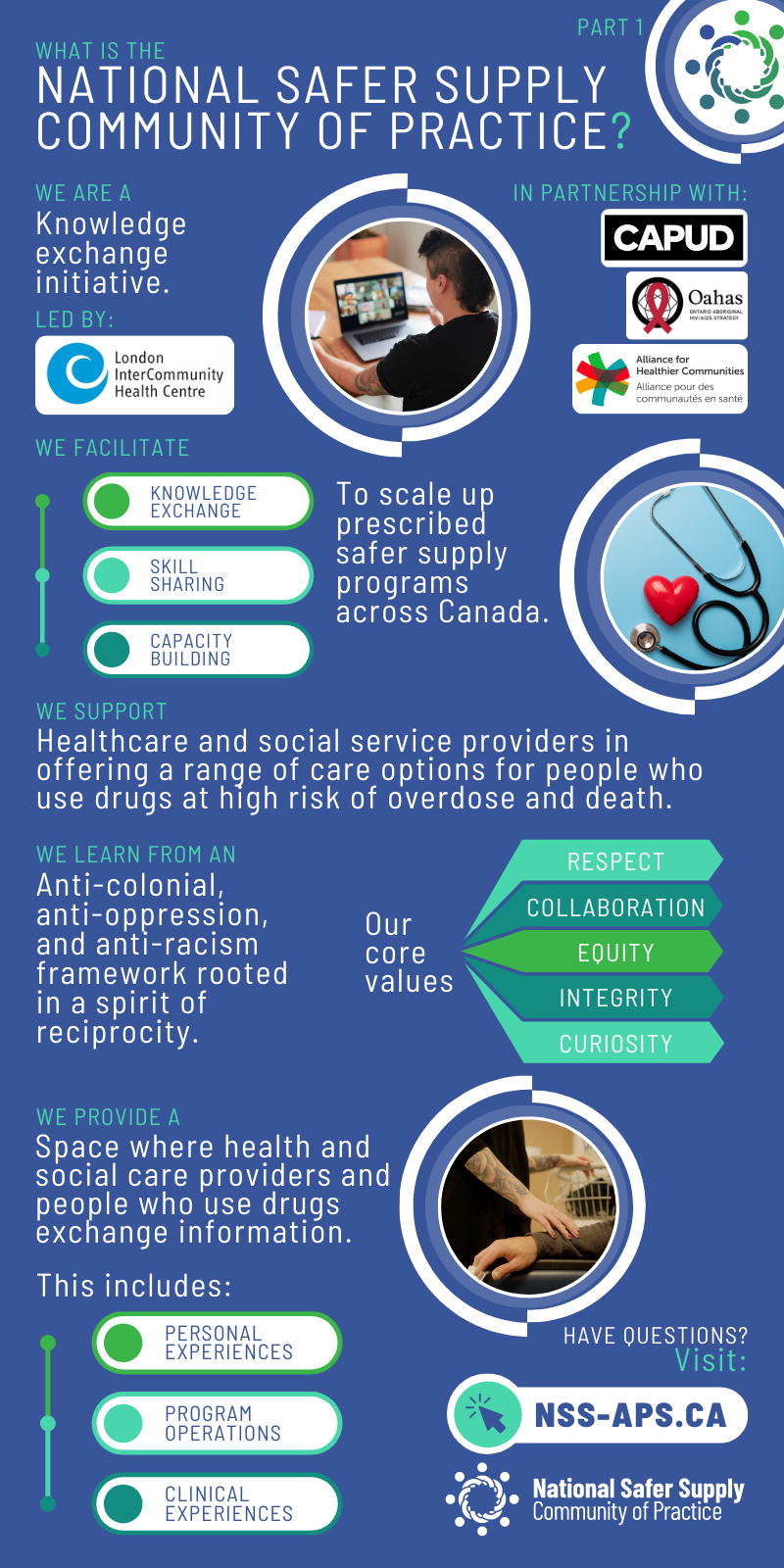
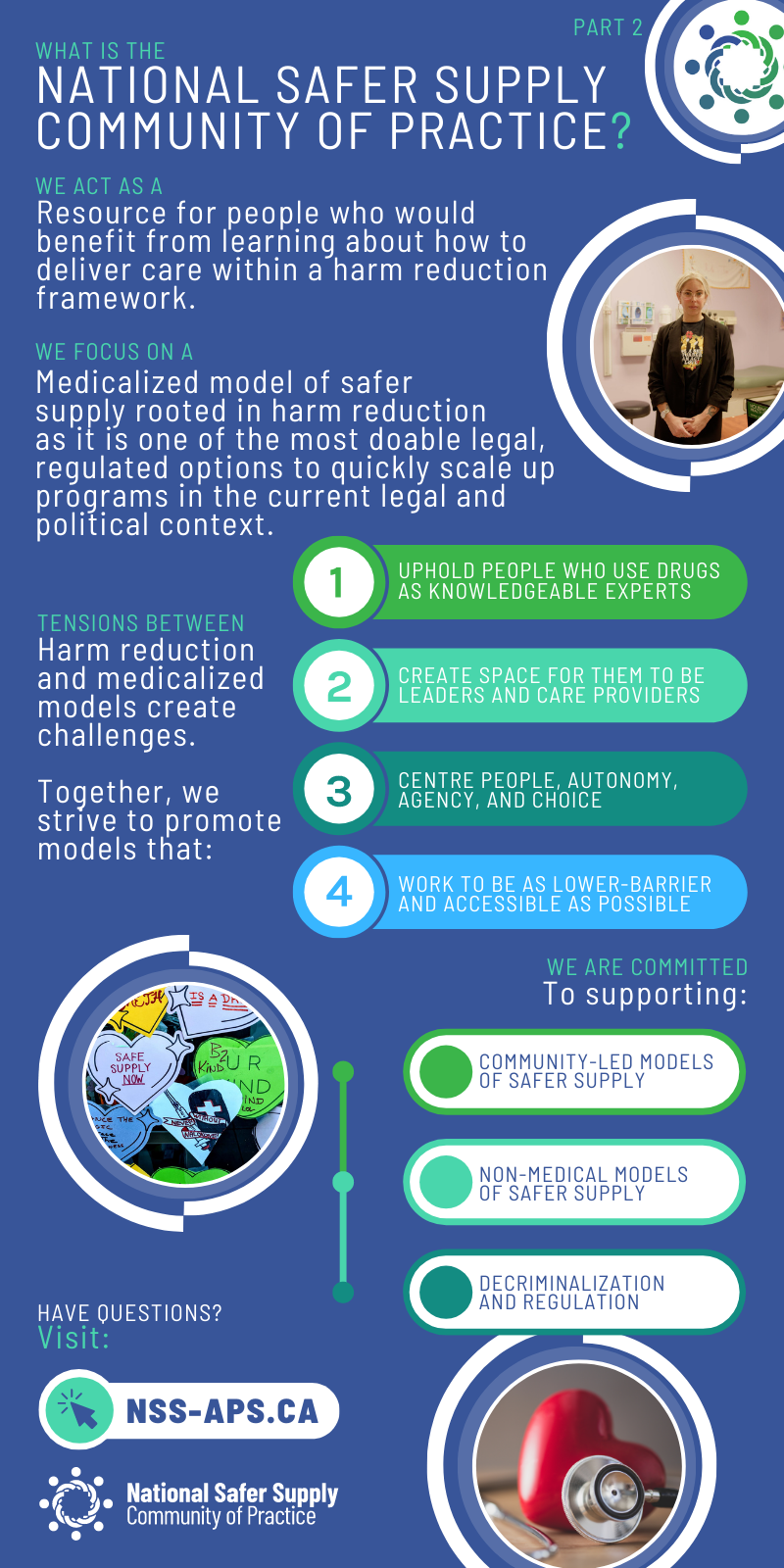
Download Part 1 of this infographic as a PNG.
Download Part 2 of this infographic as a PNG.
Download this series in a .zip file to share on Twitter.
Download this series in a .zip file to share on Instagram and Facebook.
Definitions Matter.
2023-07
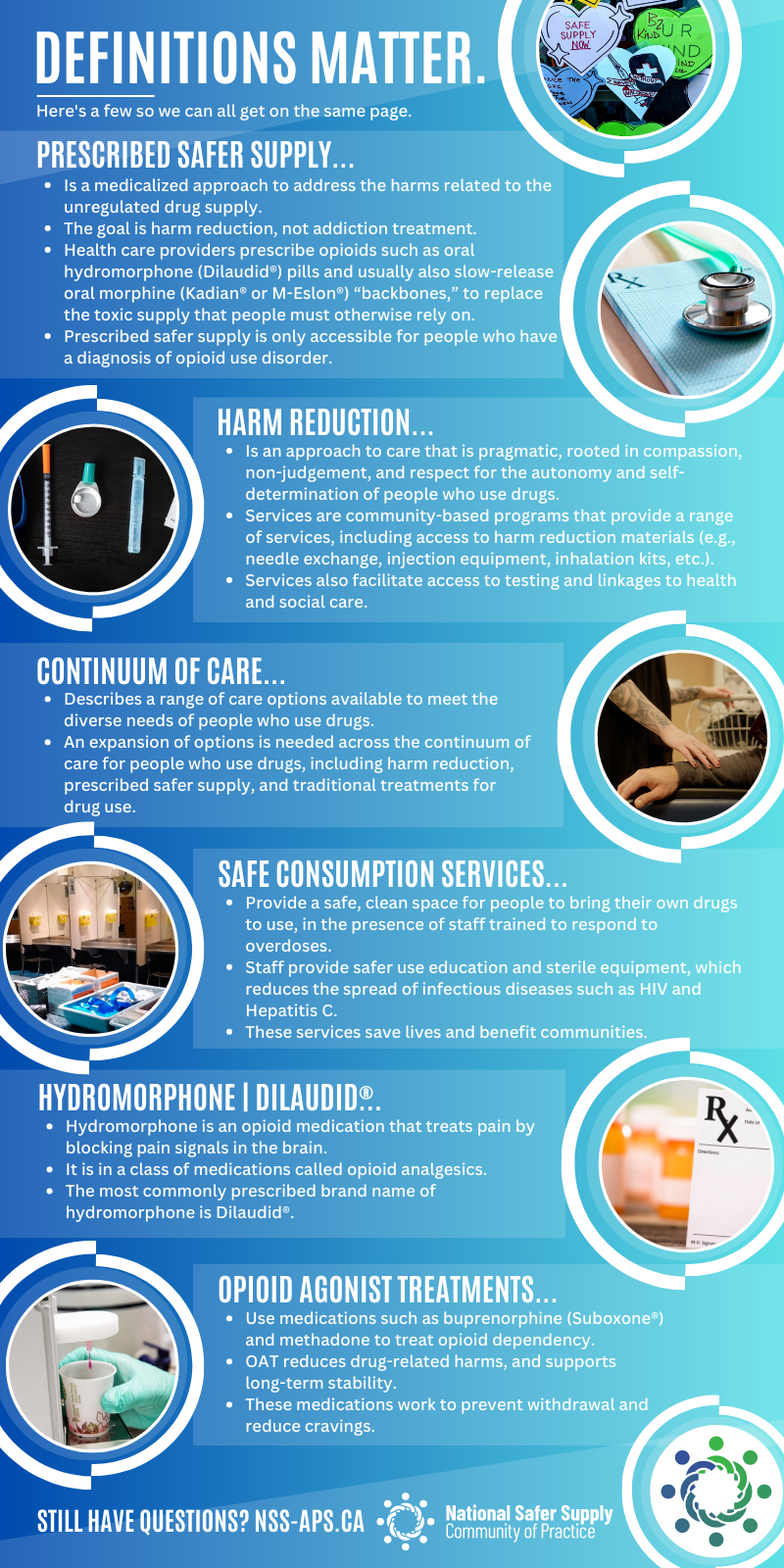
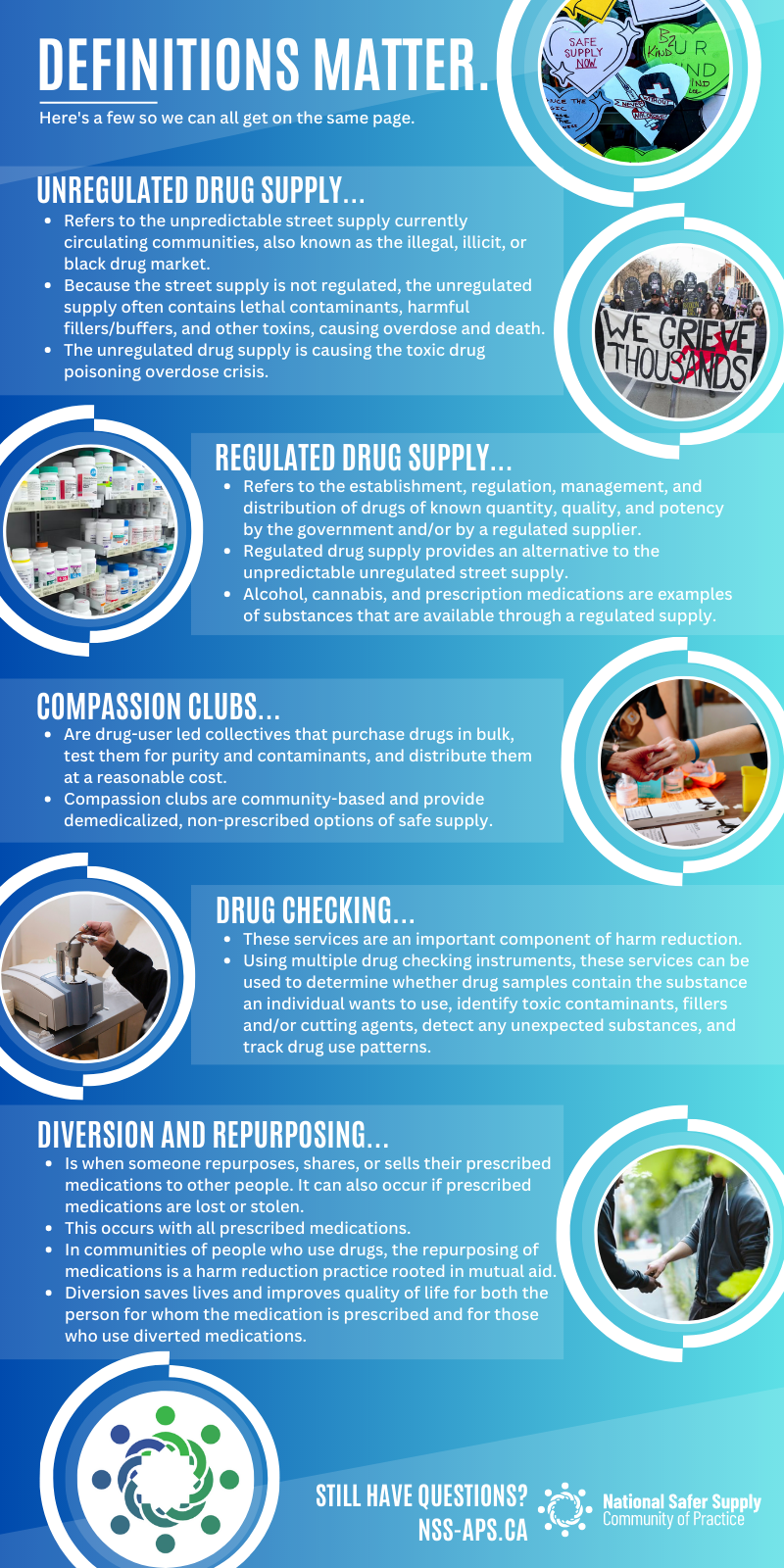
Download Part 1 of this infographic as a PNG.
Download Part 2 of this infographic as a PNG.
Download this series in a .zip file to share on Twitter.
Download this series in a .zip file to share on Instagram and Facebook.
What is Prescribed Safer Supply?
2023-06
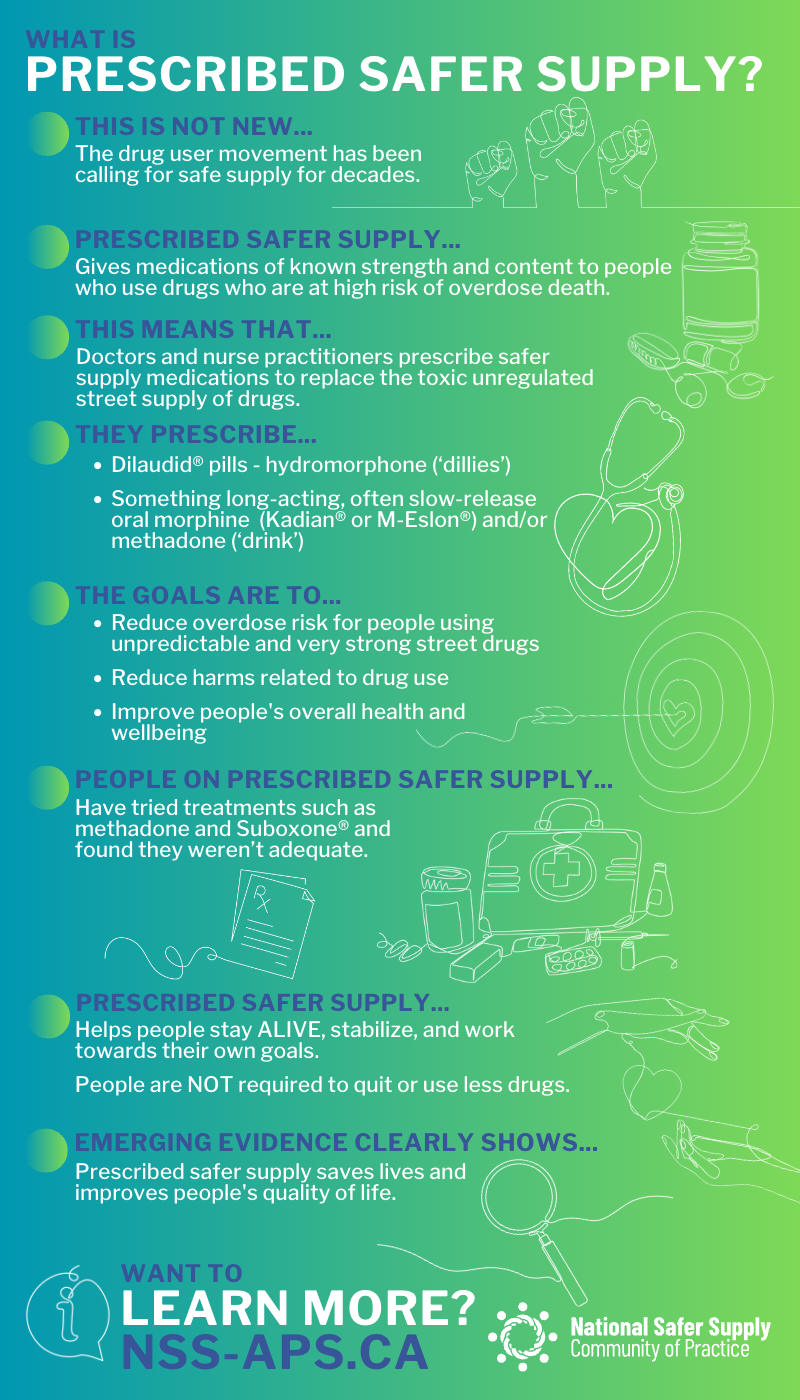
Download this infographic as a PNG.
Download this series in a .zip file to share on Twitter.
Download this series in a .zip file to share on Instagram and Facebook.
Prescribed Safer Supply Saves Lives and Enables Life
2023-05
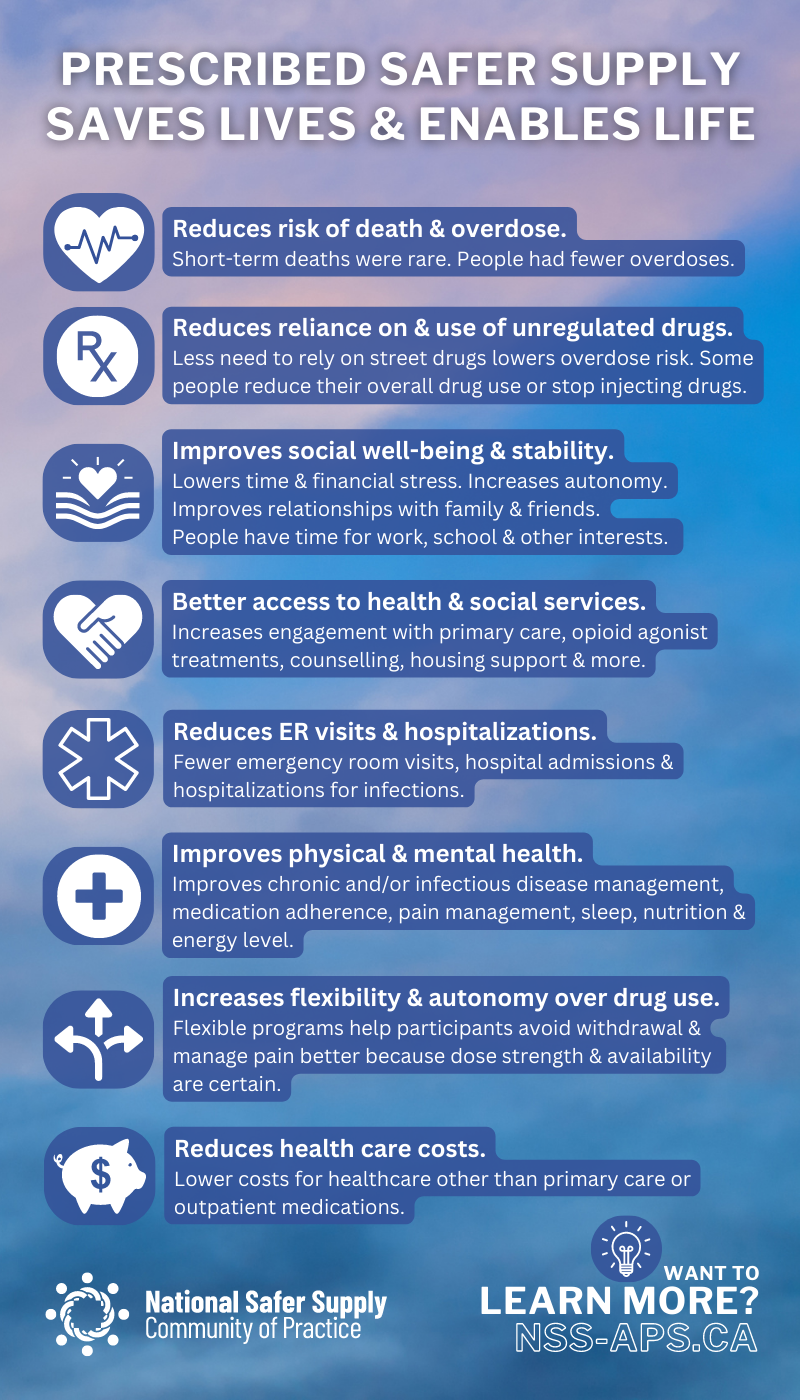
Download this infographic as a PNG.
Download this series in a .zip file to share on Twitter.
Download this series in a .zip file to share on Instagram and Facebook.
Want Facts? We've Got 'Em
2023-05
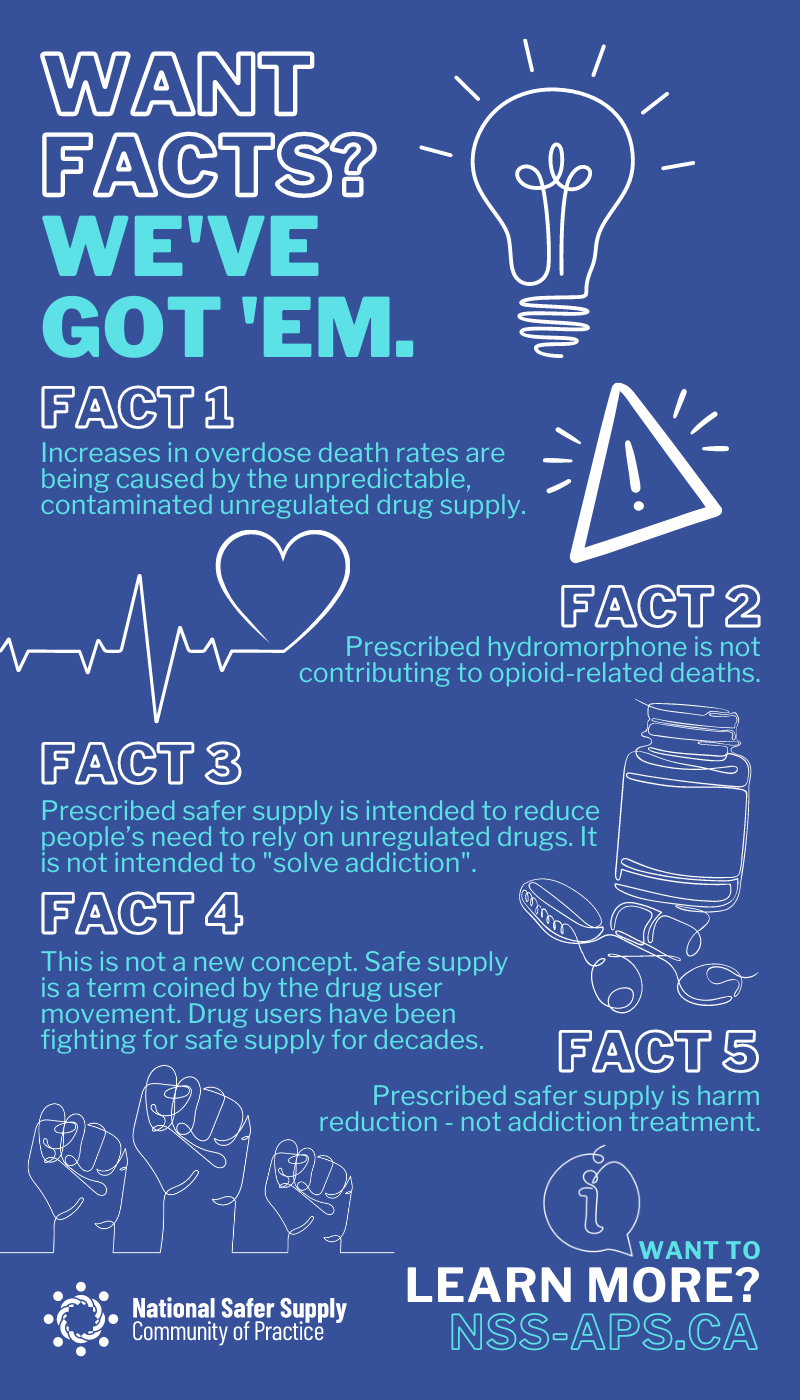
Download this infographic as a PNG.
Download this series in a .zip file to share on Twitter.
Download this series in a .zip file to share on Instagram and Facebook.
Intersections between Harm Reduction and Safer Supply
2023-05-07
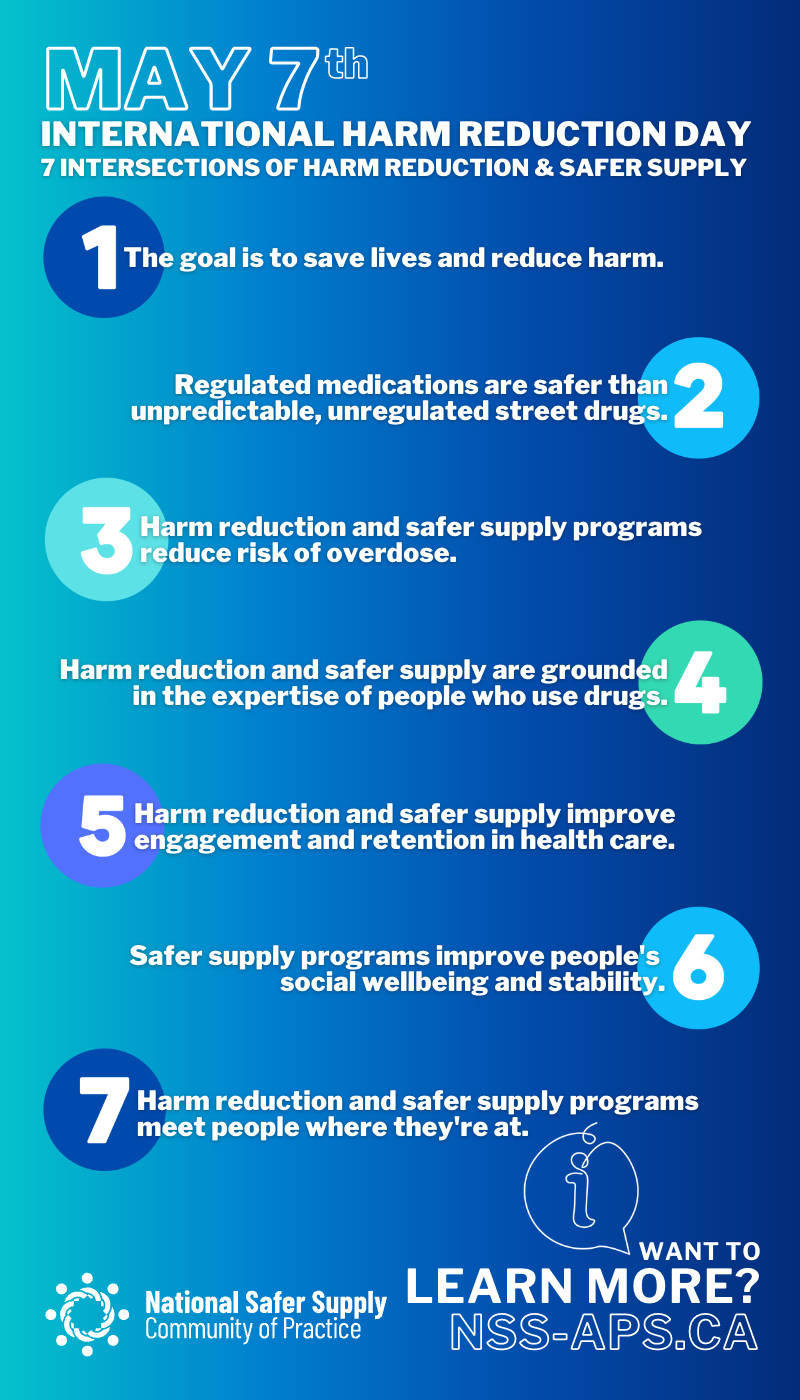
Download this infographic as a PNG.
Download this series in a .zip file to share on Twitter.
Download this series in a .zip file to share on Instagram and Facebook.
Presentation Slide Decks
- Prescribed Safer Supply Programs (NSS-CoP, 2024)
- Safer Supply 101 (LIHC, 2023)
- LIHC Safer Opioid Supply Program Operations (2023)
- Perspectives on Prescribed Safer Supply: Practice, Experience and Emerging Evidence (Presentation at CPHA, 2023)
- Safer Opioid Supply Medical Presentation by Andrea Sereda (2023)
- Safer Supply: Current Perspectives and Evidence (CATIE, 2023)
- Safer Supply Ottawa: Programs Evaluation Presentation (2022)
- The Ontario CHC Model of Safer Supply (Presentation at the Alliance for Healthier Communities Conference, 2023)
Videos
The London InterCommunity Health Centre’s Safer Opioid Supply Program - Meet the Team
This short video provides a glimpse into how the program at LIHC works and who is involved in delivering care.
London InterCommunity Health Centre’s Safer Opioid Supply Program - Program Model
Presentation about the program model by Cassidy Morris, LIHC SOS Program Administrator. 25 minutes.
Victoria SAFER Initiative: Safer Supply Program






